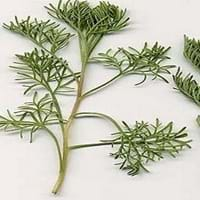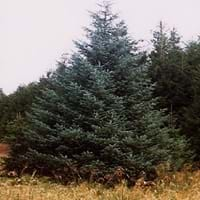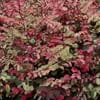Life Span
Perennial
Perennial
Origin
Southern Europe
Eastern Asia
Types
not available
Black Spruce, Norway Spruce, Colorodo Spruce
Number of Varieties
Not Available
Habitat
Temperate Regions
By seashore, Humid climates, Temperate Regions
USDA Hardiness Zone
5-8
6-8
Sunset Zone
2b, 3a, 3b, 4, 5, 6, 7, 8, 9, 10, 11, 12, 13, 14, 15, 16, 17, 18, 19, 20, 21, 22, 23, 24
A3, 2a, 2b, 3a, 3b, 4, 5, 6, 7, 8, 9, 10, 12, 14, 15, 16, 17, 18, 19, 20, 21, 22, 23, 24
Habit
Upright/Erect
Oval or Rounded
Minimum Height
Not Available
Minimum Width
Not Available
Flower Color
Yellow, Gray
Red
Flower Color Modifier
Not Available
Bicolor
Fruit Color
Non Fruiting Plant
Red, Green
Leaf Color in Spring
Gray Green
Green, Light Green
Leaf Color in Summer
Gray Green
Green
Leaf Color in Fall
Gray Green
Red, Crimson
Leaf Color in Winter
Not Available
Not Available
Leaf Shape
Long hair-like leaves
Acicular
Plant Season
Spring, Summer, Fall
Spring, Summer, Fall, Winter
Sunlight
Full Sun
Full Sun, Partial Sun, Partial shade
Growth Rate
Medium
Medium
Type of Soil
Loam
Clay, Loam, Sand
The pH of Soil
Neutral
Acidic, Neutral
Soil Drainage
Well drained
Average
Bloom Time
Late Summer
Early Spring, Spring, Late Spring, Early Summer
Tolerances
Not Available
Heat Tolerance, Humidity, Light Frost
Where to Plant?
Ground, Pot
Ground
How to Plant?
Cuttings, Seedlings
Seedlings, Spores
Plant Maintenance
Medium
Medium
Watering Requirements
Average Water Needs, Keep the Soil well drained
Needs less watering
In Summer
Lots of watering
Lots of watering
In Spring
Moderate
Moderate
In Winter
Average Water
Average Water
Soil pH
Neutral
Acidic, Neutral
Soil Type
Loam
Clay, Loam, Sand
Soil Drainage Capacity
Well drained
Average
Sun Exposure
Full Sun
Full Sun, Partial Sun, Partial shade
Pruning
Cut back old stems to the ground, Remove damaged leaves, Remove dead branches, Remove dead leaves
Prune when young, Remove dead branches
Fertilizers
All-Purpose Liquid Fertilizer, Complete balanced fertilizer
slow-release fertilizers
Pests and Diseases
Free of serious pests and diseases
Aphids, Birds, Snails
Plant Tolerance
Drought
Heat Tolerance, Humidity, Light Frost
Flowers
Insignificant
Insignificant
Flower Petal Number
Not Available
Single
Foliage Texture
Medium
Fine
Foliage Sheen
Matte
Matte
Attracts
Not Available
Ants, Fruit Bats, Snails, Squirrels
Allergy
Skin irritation
Constipation, Diarrhea, Dizziness, Sore eyes
Aesthetic Uses
Farmland, small hedge, Wild gardens
Showy Purposes
Beauty Benefits
Not Available
For treating wrinkles, Making cosmetics, Speed hair growth
Edible Uses
Yes
Sometimes
Environmental Uses
Air purification
Agroforestry, Air purification, Nesting sites for birds, soil stabilisation
Medicinal Uses
Antiseptic, Digestive, Liver problems, Skin Disorders, Tonic
anti-inflammatory, Back pain, Emollient, Immunity, Obesity
Part of Plant Used
Branch, Fibres, Flower Stalk, Gum, Leaves, Twigs
Leaf Stalks, Root
Other Uses
Oil is used in mosquito repellents, Used for fragrance, Used to make hair tonic
Constructing Boats, Making piano frames, Used as fuel, Used in Furniture, Used in making musical instruments, Used in paper industry, Used in pencil industry
Used As Indoor Plant
No
No
Used As Outdoor Plant
Yes
Yes
Garden Design
Herb, Vegetable, Mixed Border, Rock Garden, Wall
Container, Feature Plant, Mixed Border, Topiary / Bonsai / Espalier
Botanical Name
ARTEMISIA abrotanum
ACER palmatum 'Osakazuki'
Common Name
lad's love , southern wormwood , old man , boy's love , appleringie , sitherwood
Japanese Maple, Osakasuki Japanese Maple
In Hindi
southernwood
सरल
In German
Eberraute
Fichten
In French
aurone ou citronnelle
Picea
In Spanish
Artemisia abrotanum
Picea
In Greek
Artemisia abrotanum
Spruce
In Portuguese
Abrótano
Picea
In Polish
Bylica boże drzewko
Świerk
In Latin
Southernwood
Picea
Phylum
Magnoliophyta
Pinophyta
Class
Magnoliopsida
Pinopsida
Family
Asteraceae
Aceraceae
Clade
Angiosperms, Asterids, Eudicots
Not Available
Tribe
Anthemideae
Not Available
Subfamily
Asteroideae
Piceoideae
Number of Species
Not Available
Season and Care of Southernwood and Sitka Spruce
Season and care of Southernwood and Sitka Spruce is important to know. While considering everything about Southernwood and Sitka Spruce Care, growing season is an essential factor. Southernwood season is Spring, Summer and Fall and Sitka Spruce season is Spring, Summer and Fall. The type of soil for Southernwood is Loam and for Sitka Spruce is Clay, Loam, Sand while the PH of soil for Southernwood is Neutral and for Sitka Spruce is Acidic, Neutral.
Southernwood and Sitka Spruce Physical Information
Southernwood and Sitka Spruce physical information is very important for comparison. Southernwood height is Not Available and width Not Available whereas Sitka Spruce height is 460.00 cm and width 460.00 cm. The color specification of Southernwood and Sitka Spruce are as follows:
Southernwood flower color: Yellow and Gray
Southernwood leaf color: Gray Green
Sitka Spruce flower color: Red
- Sitka Spruce leaf color: Green and Light Green
Care of Southernwood and Sitka Spruce
Care of Southernwood and Sitka Spruce include pruning, fertilizers, watering etc. Southernwood pruning is done Cut back old stems to the ground, Remove damaged leaves, Remove dead branches and Remove dead leaves and Sitka Spruce pruning is done Prune when young and Remove dead branches. In summer Southernwood needs Lots of watering and in winter, it needs Average Water. Whereas, in summer Sitka Spruce needs Lots of watering and in winter, it needs Average Water.





